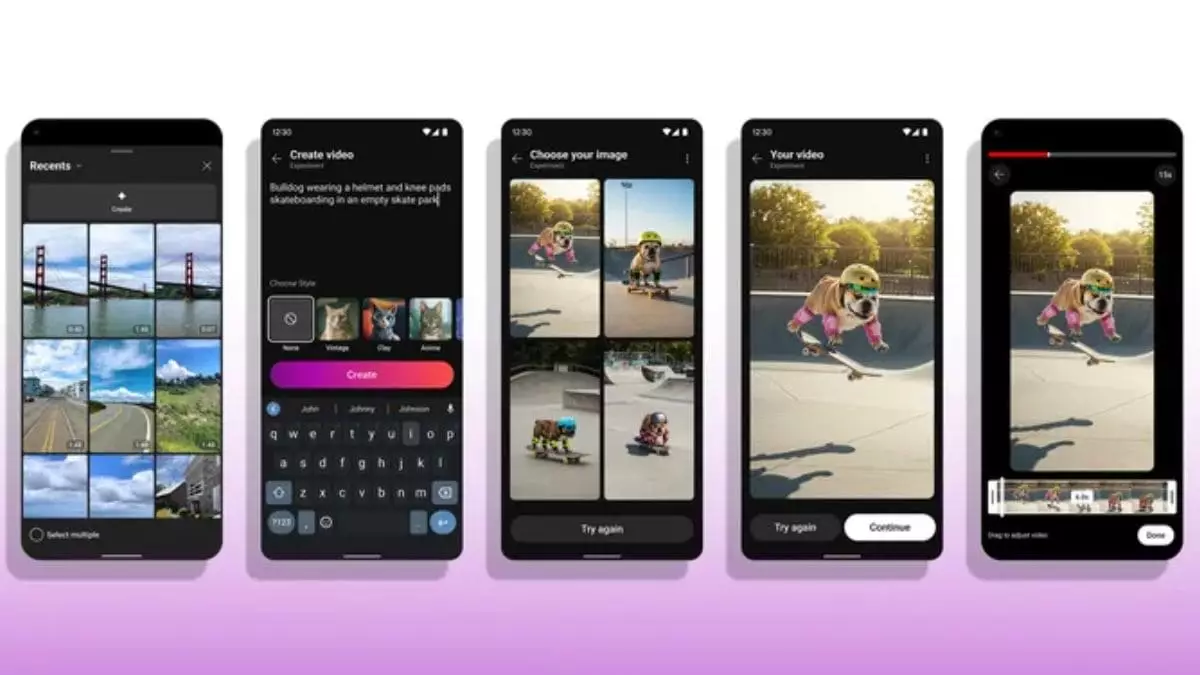YouTube has recently introduced an exciting new feature aimed at enhancing the creative capabilities of its users. On Thursday, the platform unveiled its integration of Google’s Veo 2 AI model with the existing Dream Screen function. This robust update not only expands the scope of content creation but also responds to the growing demand for innovative tools among digital creators in the rapidly evolving landscape of online video.
The latest advancement allows users to generate standalone AI-created videos, dramatically increasing their creative toolkit. Previously, the Dream Screen only facilitated the addition of AI-generated backgrounds to existing content. Now, with the inception of this advanced text-to-video generator, creators can produce videos tailored specifically to their needs. Through a simple text prompt, users can describe their desired footage, enabling the Veo 2 AI model to generate visually appealing content that may otherwise be difficult to source.
This new feature is particularly significant for YouTube’s Shorts—a vertical video format aimed at delivering quick, engaging content that was launched in 2020. By integrating advanced AI capabilities, YouTube seeks to streamline the creative process, allowing for a more intuitive and spontaneous video creation experience.
Veo 2, developed by Google DeepMind, represents a significant leap in the realm of video generation technologies, succeeding its predecessor, the Veo AI model. Launched in December 2024, Veo 2 boasts improved realism in video output, enhanced detail, and a sophisticated understanding of cinematic techniques. Creators will benefit from its ability to manipulate elements such as genre, lens type, cinematic effects, and camera movements, thereby elevating the overall quality of the content produced via this new feature.
The functionality offered by Veo 2 positions YouTube innovators at the forefront of multimedia creativity. By employing a user-friendly interface that guides creators step-by-step in generating their content, the platform lowers the barrier to entry for users eager to take advantage of cutting-edge technology, regardless of their previous experience or technical skills.
Addressing Concerns with Responsible AI Practices
In an age where deepfake technologies pose significant ethical challenges, YouTube is also mindful of the implications associated with AI-generated content. The introduction of SynthID watermarks on all AI-created videos is a proactive measure aimed at preserving content authenticity and mitigating the risks of misuse. By labeling AI-generated videos, YouTube attempts to foster a transparent environment where audiences can distinguish between user-generated and AI-generated content.
However, this feature is currently exclusive to creators in select regions—Australia, Canada, New Zealand, and the USA. As YouTube rolls out this technology, its long-term success will depend on the platform’s ability to balance creativity with responsibility, ensuring users feel empowered while also safeguarding against potential misuse of AI capabilities.
The Future of Content Creation
As platforms like YouTube continue to evolve alongside advancements in AI technology, creators are poised to explore new frontiers in content generation. Integrating tools like the Dream Screen and Veo 2 could herald a new era for digital creators, fostering an environment where imagination meets technology. If successfully rolled out and responsibly managed, these innovations have the potential to change not just how content is created, but the very fabric of the online video landscape itself.


Leave a Reply